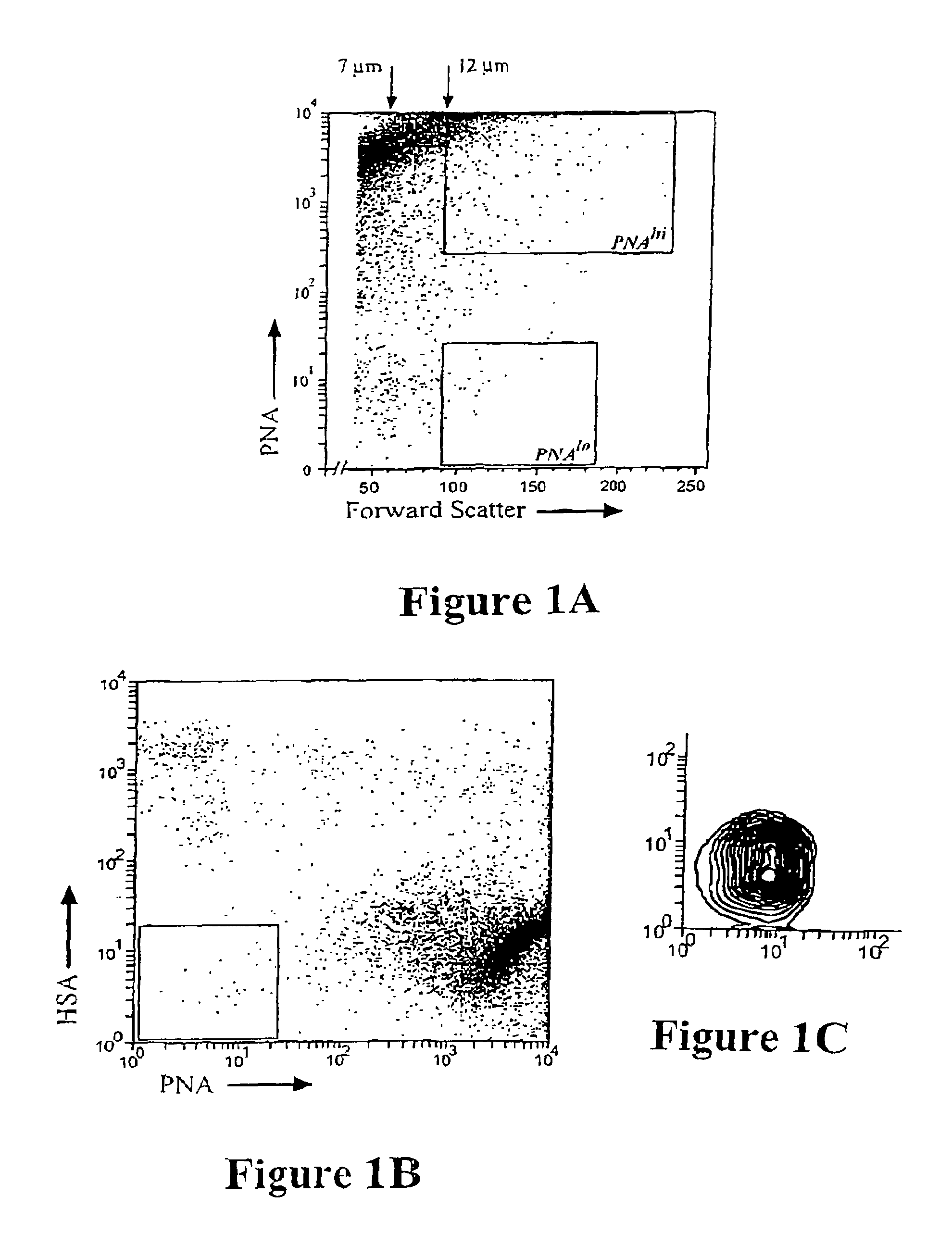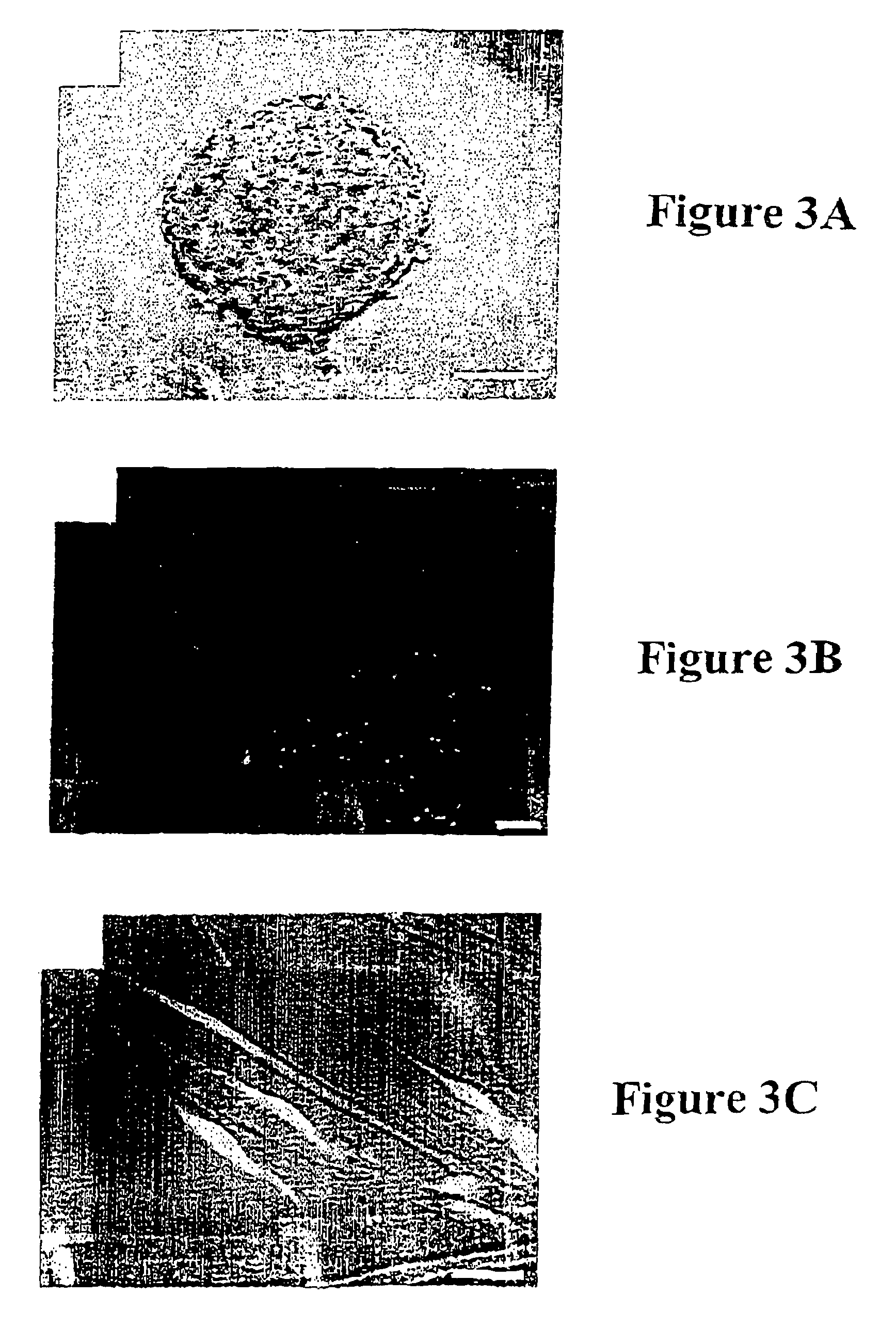Method of purification of cells
a cell purification and cell technology, applied in the field of cell purification, can solve the problems of cumbersome stem cell culture protocols, insufficient number of stem cells needed for tissue replacement therapy, and inability to expand the number of cultured hemopoietic stem cells
- Summary
- Abstract
- Description
- Claims
- Application Information
AI Technical Summary
Benefits of technology
Problems solved by technology
Method used
Image
Examples
example 1
[0114]Adult mice (8-10 weeks old) were sacrificed by cervical dislocation CNS tissue dissected into Hepes buffered Eagle's medium (HEM) essentially as per Lois and Alvarez-Buylla, (Proc. Natl. Acad. Sci. USA 90, 2074-2077, 1993). Both the ventricular and sub-ventricular (SVZ) zones of the lateral ventricular walls of adult CBA mice were used as the source of NSC. CNS tissue was diced then transferred to Mg++ / Ca++ free HBSS (containing 10 mM Hepes, 200 g / ml EDTA, 0.5 mM trypsin, 0.001% w / v DNase; pH 7.6, for 10 minutes at 37° C. 6 mls of HEM+5% v / v fetal calf serum (FCS) was added and the tissue pieces collected by centrifugation (7 minutes at 100×g), Supernatent was removed and pellet triturated in PBS (pH 7.4) to produce a single cell suspension which was subsequently passed through a 70 μM cellstrainer (Falcon) to remove debris.
[0115]Following enzymatic dissociation, single cell suspensions were stained with a variety of antibodies and lectins then sorted using a...
example 2
FACS Analysis
[0116]For immunostaining, the resulting suspension was incubated for 20 minutes at 4° C. with FITC conjugated PNA (1:200; Vecta, Burlingame, Calif.), or PNA-FITC combined with PE-conjugated mCD24a (1:200; Clone M1 / 69, Pharmingen). Following incubation, the cell suspension was rinsed twice with PBS via centrifugation, and finally in PBS÷1% v / v FCS Propidium Iodide (P.I.; 100 pg / ml; Molecular Probes) to label dead cells before FACS analysis. Cell viability was typically greater than 95% and all FACS gates were set using unlabelled cells.
[0117]An initial NSC enrichment step was accomplished by sorting viable cells on the basis of their size as assessed by forward light scatter (FSC) [FIG. 1A] It was found that >80% of the total NSCs present in the unsorted population were contained in the cells of >12 μm in diameter (>90 units FSC). Next, the differential binding of a lectin, peanut agglutinin (PNA), was used to selectively enriched for NSCs. From the FACS profiles compari...
example 3
FACS Analysis and Characterization of PNAlo HSAlo NSCs
[0119]To examine the phenotype of the PNAlo HSAlo NSCs more closely, sorted cells were immunostained for other neural markers. PNAlo HSAlo NSCs expressed nestin, a marker of putative neural stem and precursor cells (Calaora et al, Neuroscience 73: 581-594 1996), however, they did not express the cell type specific neural markers (β-tubulin type III, 04 or GFAP).
PUM
 Login to View More
Login to View More Abstract
Description
Claims
Application Information
 Login to View More
Login to View More - R&D
- Intellectual Property
- Life Sciences
- Materials
- Tech Scout
- Unparalleled Data Quality
- Higher Quality Content
- 60% Fewer Hallucinations
Browse by: Latest US Patents, China's latest patents, Technical Efficacy Thesaurus, Application Domain, Technology Topic, Popular Technical Reports.
© 2025 PatSnap. All rights reserved.Legal|Privacy policy|Modern Slavery Act Transparency Statement|Sitemap|About US| Contact US: help@patsnap.com



